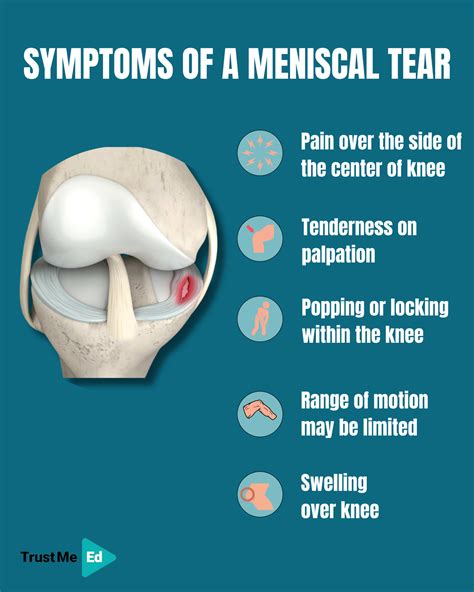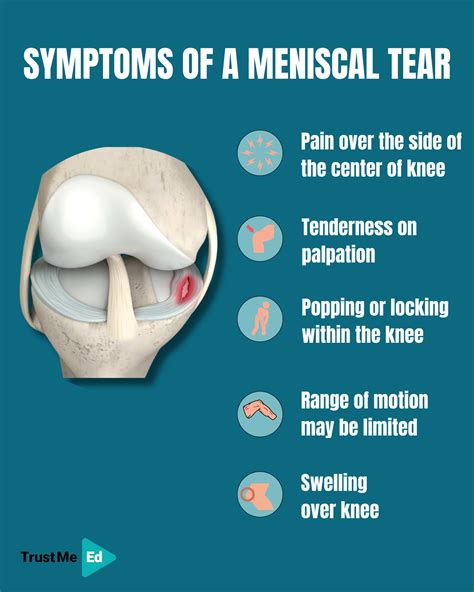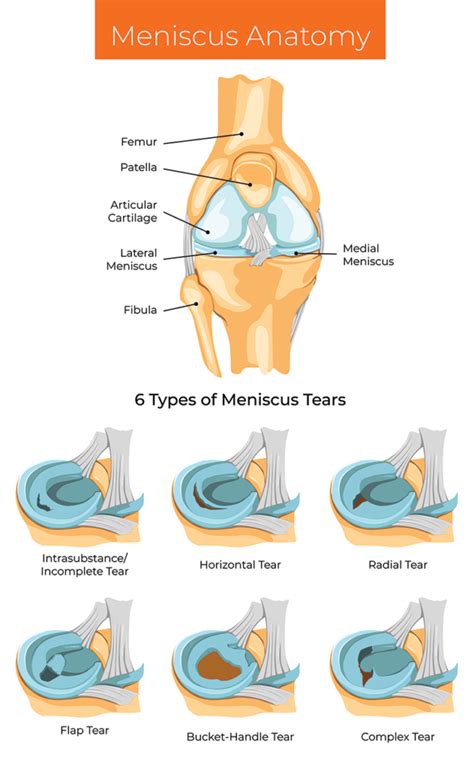Intro
Learn about meniscus tear surgery, including diagnosis, treatment options, and recovery. Understand knee meniscus repair, meniscectomy, and meniscus transplant procedures to alleviate knee pain and restore mobility.
The meniscus is a crucial component of the human knee, acting as a cushion between the shinbone and thighbone. A meniscus tear is a common injury that can occur due to sudden twisting or bending, and it often requires surgical intervention to repair or remove the damaged tissue. Meniscus tear surgery is a complex procedure that involves various techniques and considerations, and understanding the process can help individuals make informed decisions about their treatment options.
Meniscus tears can be painful and debilitating, making it difficult to perform everyday activities. The decision to undergo surgery depends on several factors, including the severity of the tear, the patient's overall health, and their lifestyle. In some cases, conservative treatments such as physical therapy and pain management may be sufficient, but in more severe cases, surgery may be the only option to restore knee function and alleviate pain. The goal of meniscus tear surgery is to repair or remove the damaged meniscus, allowing the patient to regain mobility and return to their normal activities.
The importance of meniscus tear surgery lies in its ability to improve knee function and reduce pain. Without proper treatment, meniscus tears can lead to further complications, such as arthritis and chronic pain. Meniscus tear surgery is a relatively common procedure, and advancements in medical technology have improved its safety and effectiveness. However, it is essential to understand the risks and benefits associated with the procedure to make informed decisions about treatment. In this article, we will delve into the world of meniscus tear surgery, exploring its benefits, working mechanisms, and key considerations.
What is Meniscus Tear Surgery?

Types of Meniscus Tear Surgery
There are two primary types of meniscus tear surgery: meniscectomy and meniscus repair. Meniscectomy involves the removal of the damaged meniscus tissue, while meniscus repair involves the repair of the torn meniscus. The choice of surgery depends on the severity and location of the tear, as well as the patient's overall health and lifestyle. Meniscectomy is often performed for smaller tears, while meniscus repair is preferred for larger tears.Benefits of Meniscus Tear Surgery

Risks and Complications
As with any surgical procedure, meniscus tear surgery carries some risks and complications. These may include: * Infection: As with any surgery, there is a risk of infection with meniscus tear surgery. * Blood clots: Patients may be at risk of developing blood clots after the procedure. * Nerve damage: There is a risk of nerve damage during the surgery, which can result in numbness, tingling, or weakness in the affected leg. * Knee stiffness: Patients may experience knee stiffness after the surgery, which can be treated with physical therapy.How is Meniscus Tear Surgery Performed?

Recovery and Rehabilitation
Recovery and rehabilitation are crucial components of meniscus tear surgery. Patients typically require several weeks of physical therapy to regain knee mobility and strength. The rehabilitation process involves: * Pain management: Patients may require pain medication to manage discomfort and pain. * Physical therapy: Patients undergo physical therapy to regain knee mobility and strength. * Bracing: Patients may require a knee brace to support the affected knee during the recovery period.Meniscus Tear Surgery Techniques

Meniscus Tear Surgery Costs
The cost of meniscus tear surgery varies depending on several factors, including: * Location: The cost of surgery can vary depending on the location and hospital. * Insurance: Patients with insurance may have a lower out-of-pocket cost. * Surgeon's fees: The surgeon's fees can vary depending on their experience and qualifications.Meniscus Tear Surgery Alternatives

Meniscus Tear Surgery Success Rates
The success rate of meniscus tear surgery varies depending on several factors, including: * Severity of the tear: The success rate is higher for smaller tears. * Patient's overall health: Patients with underlying medical conditions may have a lower success rate. * Surgeon's experience: The success rate can vary depending on the surgeon's experience and qualifications.What are the risks and complications of meniscus tear surgery?
+The risks and complications of meniscus tear surgery include infection, blood clots, nerve damage, and knee stiffness.
How long does it take to recover from meniscus tear surgery?
+The recovery time for meniscus tear surgery varies depending on the individual, but most patients can return to their normal activities within 6-8 weeks.
Can meniscus tear surgery be performed arthroscopically?
+Yes, meniscus tear surgery can be performed arthroscopically, which is a minimally invasive procedure that involves inserting a small camera and surgical instruments through small incisions.
What are the alternatives to meniscus tear surgery?
+The alternatives to meniscus tear surgery include physical therapy, pain management, and bracing.
How much does meniscus tear surgery cost?
+The cost of meniscus tear surgery varies depending on several factors, including location, insurance, and surgeon's fees.
In conclusion, meniscus tear surgery is a complex procedure that requires careful consideration and planning. By understanding the benefits, risks, and alternatives to meniscus tear surgery, individuals can make informed decisions about their treatment options. If you are considering meniscus tear surgery, it is essential to consult with a qualified healthcare professional to discuss your individual needs and determine the best course of treatment. We encourage you to share your thoughts and experiences with meniscus tear surgery in the comments below and to share this article with others who may be interested in learning more about this topic.
